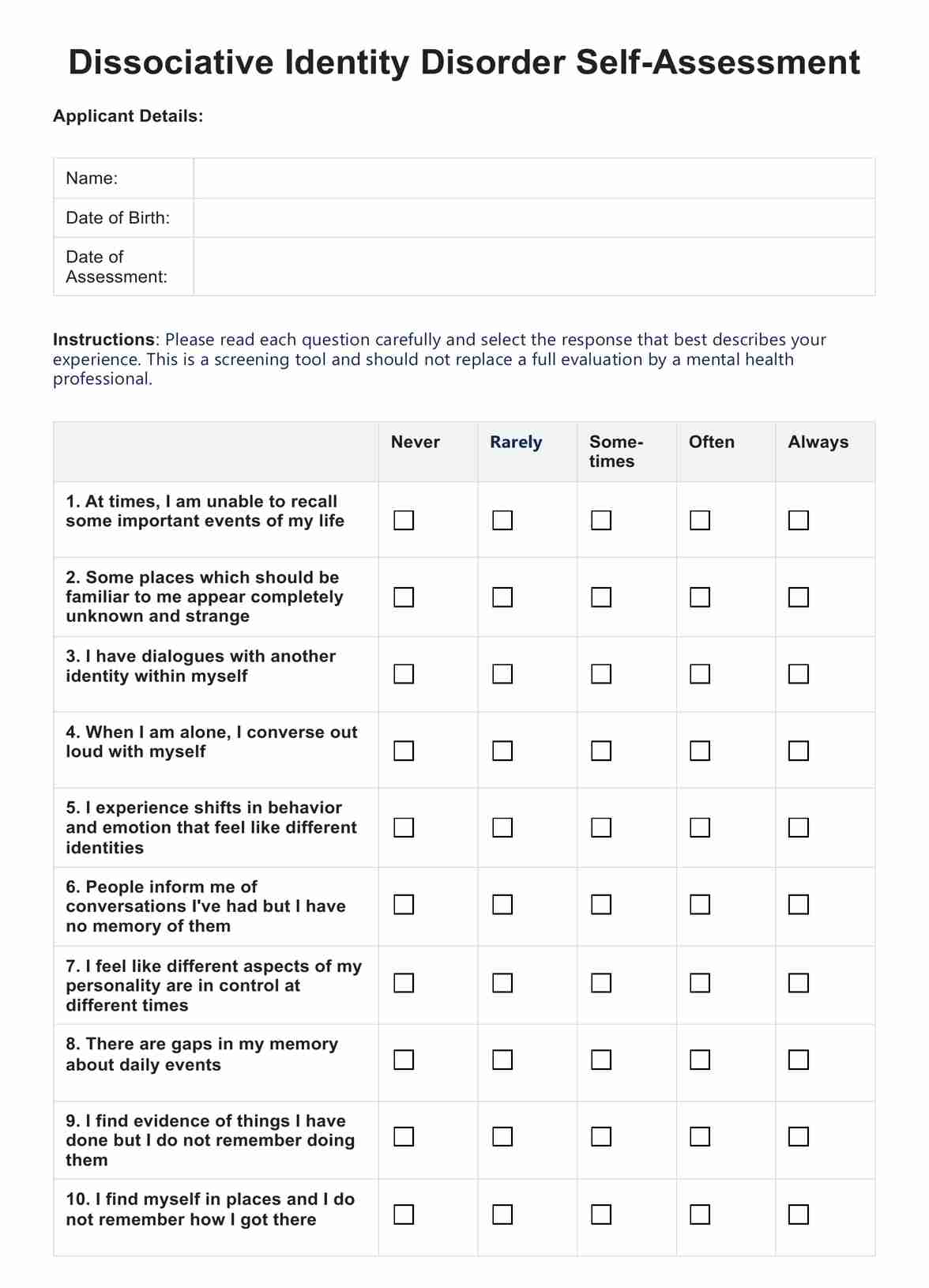Signs of dissociation can include memory lapses, amnesia, or a sense of detachment from one's body or emotions. Individuals may experience a feeling of being disconnected from their thoughts, emotions, or physical sensations, or they may have difficulty recalling important events or details.

Dissociative Identity Disorder Test
Discover reliable Dissociative Identity Disorder Tests with Carepatron. Easily access & administer DID assessments for a better understanding of mental health.
Dissociative Identity Disorder Test Template
Commonly asked questions
Dissociative identity disorder (DID) can significantly impact daily life, making it difficult for individuals to maintain relationships, work, or engage in daily activities. The presence of alters or personalities can lead to confusion, memory lapses, and difficulty managing emotions, which can affect an individual's ability to function in their daily life.
Therapists diagnose dissociative identity disorder (DID) through a comprehensive clinical interview, reviewing the patient's history, and administering standardized tests like the SCID-D. They look for the core symptoms of dissociation, amnesia, and identity fragmentation.
EHR and practice management software
Get started for free
*No credit card required
Free
$0/usd
Unlimited clients
Telehealth
1GB of storage
Client portal text
Automated billing and online payments











